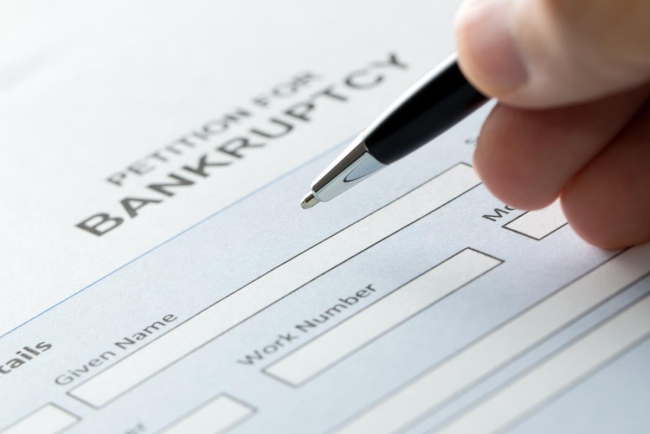You have /5 articles left.
Sign up for a free account or log in.

Istockphoto.com/Kenishirotie
A decision this week by a federal judge in New York illustrates how some courts have in the past few years made it easier for people with crippling student loan debt to file for bankruptcy, say consumer advocates and legal experts.
But while advocates like John Rao, a National Consumer Law Center bankruptcy expert, see the trend as positive, they still believe federal laws need to be changed to make it easier to discharge student loans through bankruptcy.
The issue has risen in prominence as the number of Americans with student debt has grown to an estimated 45 million, with many unable to repay their loans. Advocates as well as some lawmakers, including Senator Elizabeth Warren, the Massachusetts Democrat who is seeking her party's presidential nomination, have said changes in federal law and legal interpretations by the courts have made it notoriously difficult to get student loans discharged through bankruptcy.
Before changes to federal law in 1998, those unable to repay student loans had been able to file for bankruptcy after five years without proving the debt posed an “undue hardship.” But after changes by Congress, those seeking relief through bankruptcy for student loans, unlike other forms of debt, have to show they meet the hardship standard regardless of how old the loan is.
Congress, however, has never defined what undue hardship means and didn’t delegate to the U.S. Department of Education the ability to do so. The courts have been left to establish a three-pronged test of whether hardship exists: that borrowers could not maintain a minimal standard of living if they had to repay the loans, that the situation would continue to exist and that the borrower had made a good-faith effort to pay the money back.
But as Cecelia Morris, chief judge for the U.S. Bankruptcy Court of the Southern District of New York, noted in a decision Tuesday, the courts have set a high bar for meeting those tests. So much so, she wrote, “that most people (bankruptcy professionals as well as lay individuals) believe it is impossible to discharge student loans.”
For example, some courts have required people to prove that they will face hardship in perpetuity, an obviously high bar. "That there’s no chance they’ll ever win the lottery," for example, said Matthew Bruckner, an associate law professor at Howard University.
But some judges in the past five years have been taking a more expansive view of the hardship standard to allow bankruptcy, as they find more people coming to court who are unable to pay student loans, Rao said.
Morris, in granting a former law student, Kevin Jared Rosenberg, summary judgment to be able to file for bankruptcy, interpreted hardship in a number of significant ways. She found, for instance, that Rosenberg didn’t have to prove that repaying the loan would be a hardship forever, but only for a significant portion of the repayment period. That period ended when the Educational Credit Management Corporation called in the $221,385 Rosenberg still owed after earning a bachelor's degree from the University of Arizona and a law degree from Yeshiva University's Cardozo Law School. Clearly, Rosenberg couldn’t pay.
The impact of the ruling has its limits. Other bankruptcy judges do not have to follow Morris’s lead.
“It’s binding on no one,” Rao said. He also expects the decision to be appealed. Neither the ECMC nor its attorney, Kenneth Baum, immediately returned emails.
However, Rao said the decision could be significant because it is one of several in the last five years that have taken a broader view of meeting the hardship standard. Other judges who have wanted to allow people to file for bankruptcy because of their student loan debts could see decisions like this latest one and see that they, too, can take a more expansive view.
In another case, he said, a federal appeals court in Chicago ruled in 2013 that a 52-year-old unemployed woman who lived with her mother couldn’t repay her student loans and could file for bankruptcy.
A lower court had denied her petition saying that even though the woman -- who lived on public assistance and couldn’t afford to pay even $1 a month under a repayment plan -- might be able to make her payments if her prospects improved someday. But the appeals court ruled that if that were the standard, no one could ever file for bankruptcy because their prospects could improve one day.
Still, there appears to be some political momentum for changing the standards. The Education Department in 2018 signaled it might tweak the hardship standard when it sought public comments on the threshold.
“That’s all well and good,” Rao said. But even with a new standard, he said borrowers would still need to go to court to prove they met the threshold. And those who are struggling with student debt and considering bankruptcy generally can't afford a lawyer.
Rao’s group instead told the department that loan holders should not be allowed to oppose bankruptcy discharges in certain cases, like when borrowers are receiving Social Security, have been declared unemployable by the U.S. Department of Veterans Affairs or are caring for an elderly, chronically ill or disabled family member.
NCLC also supports a bipartisan bill proposed last May. The bill, which Warren co-sponsored, would remove current restrictions on student debt in bankruptcy and treat student loans like other types of consumer debt.




